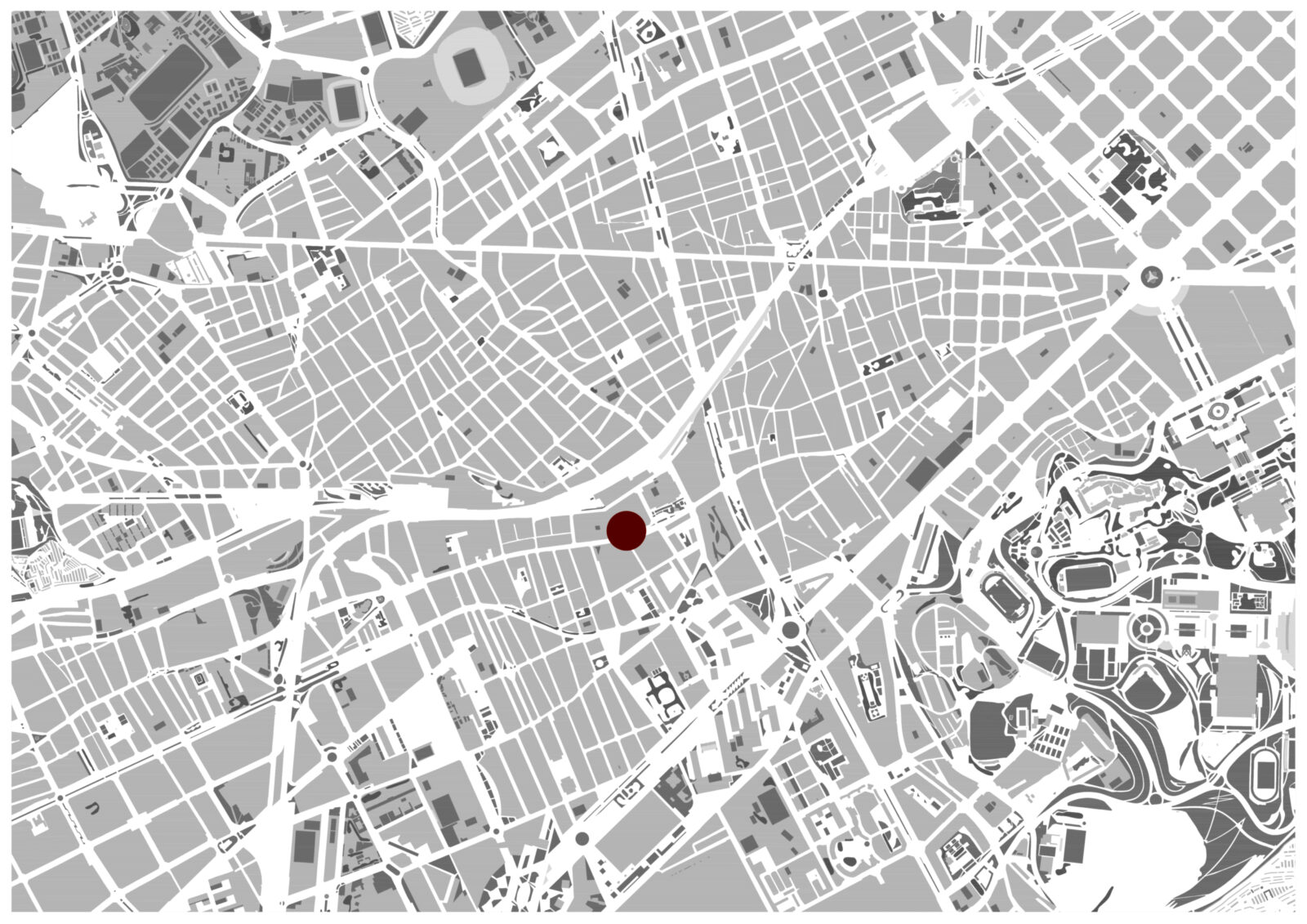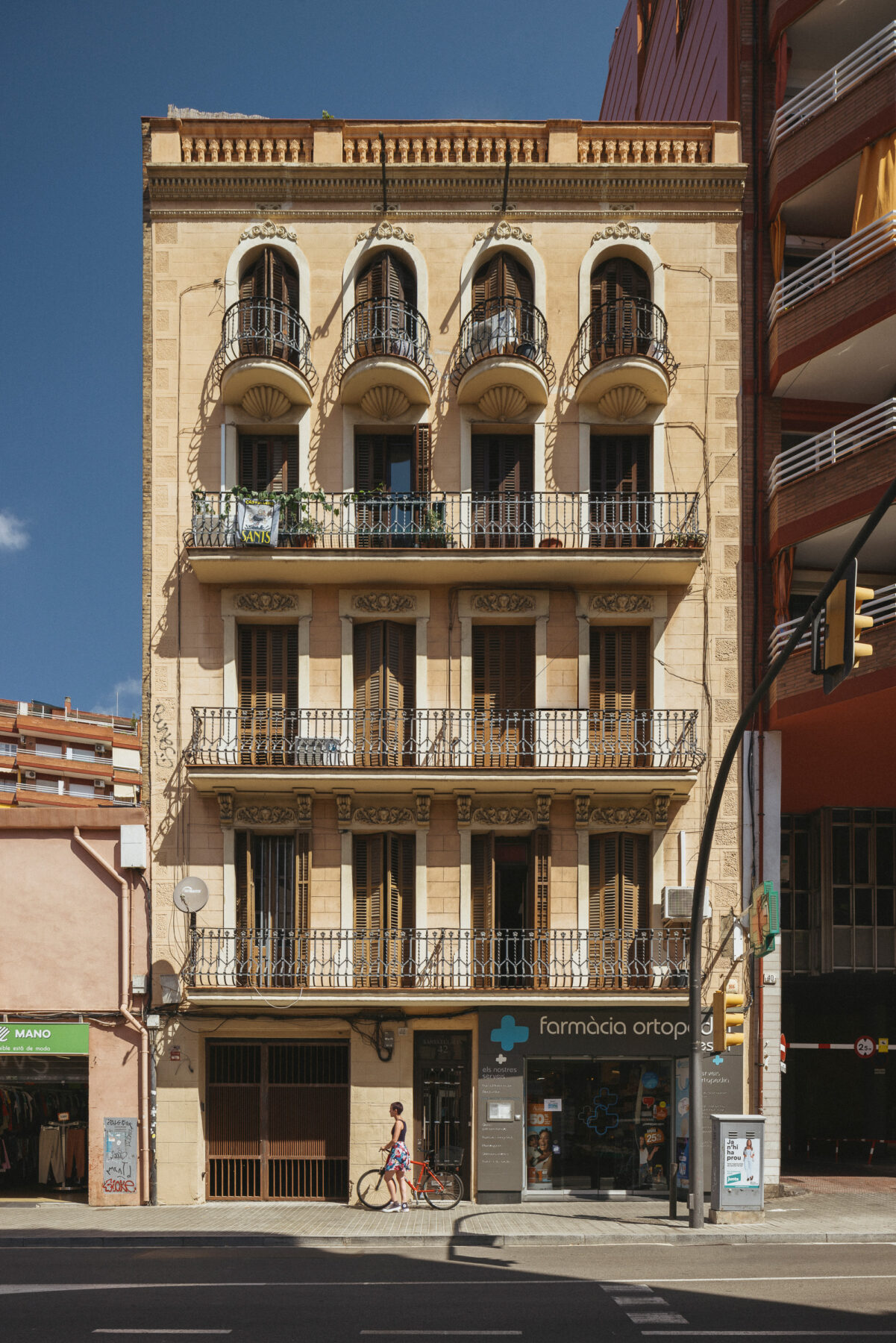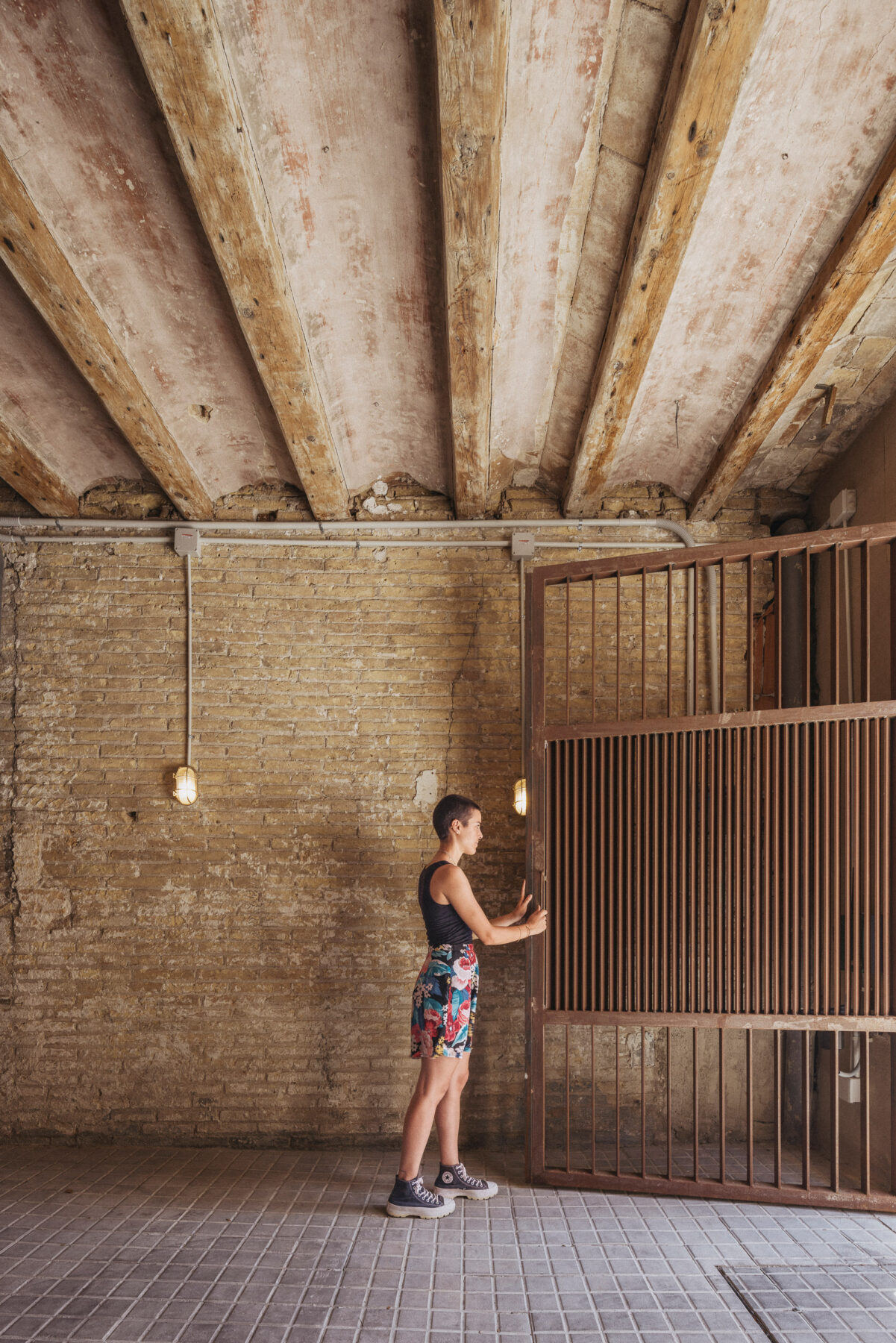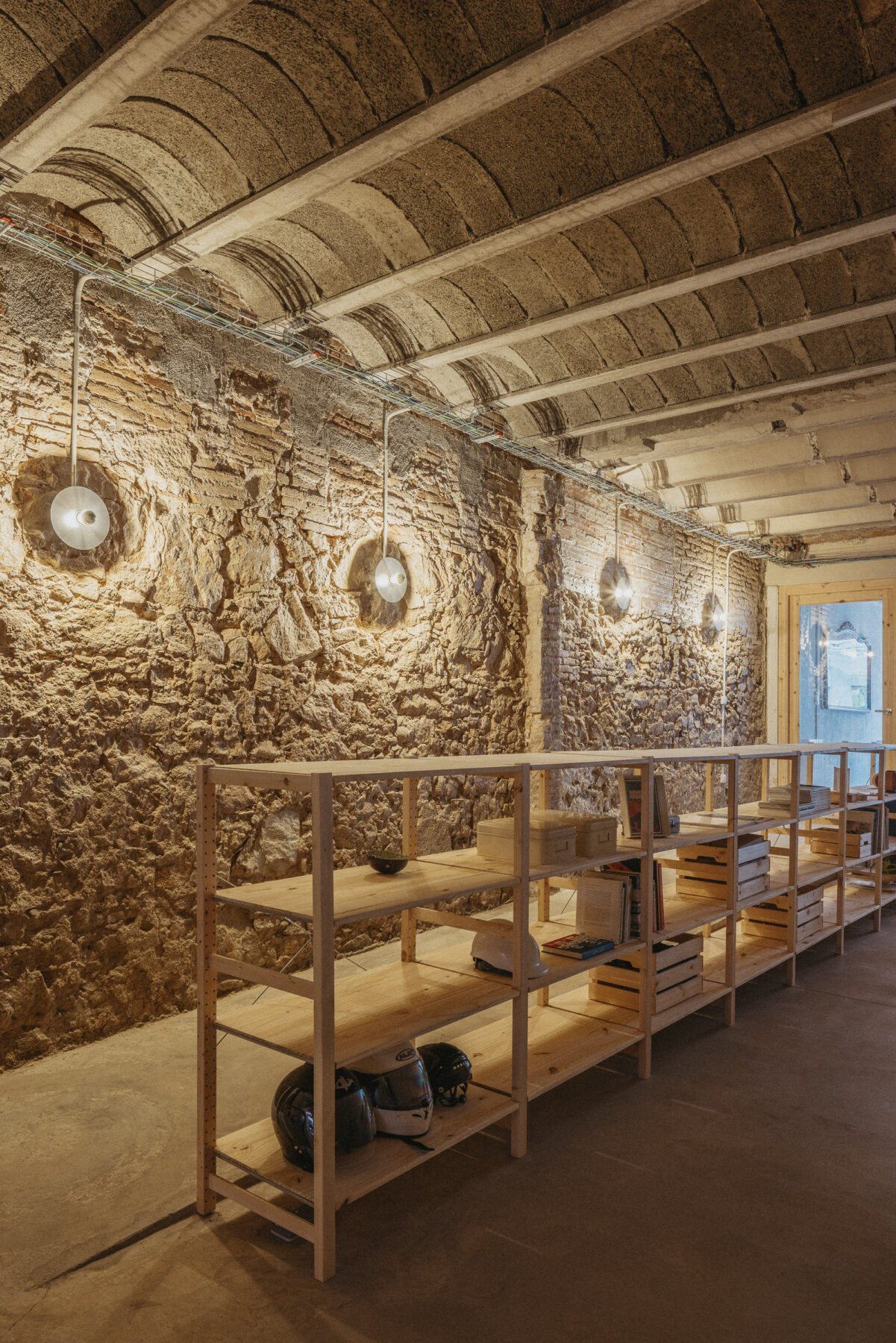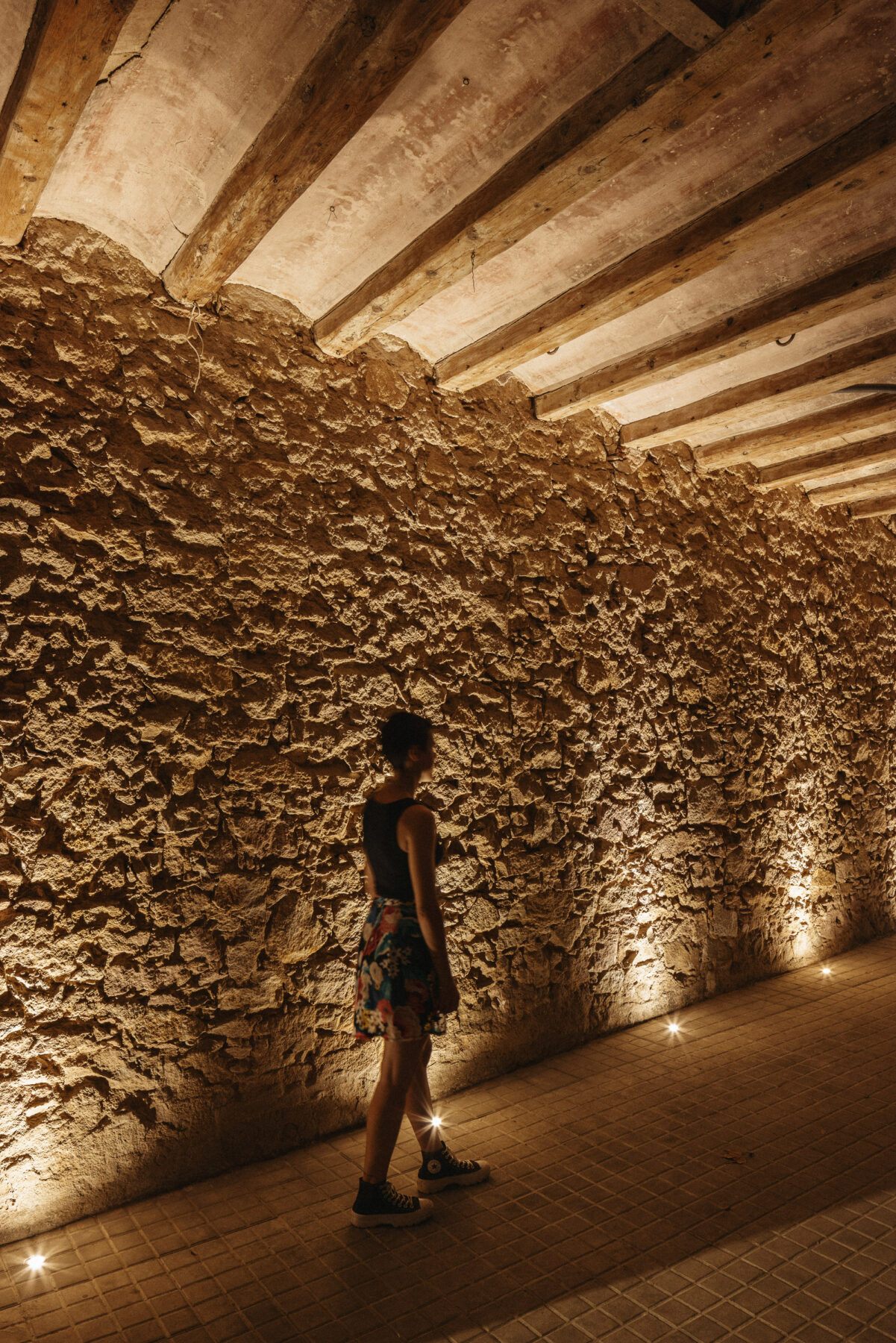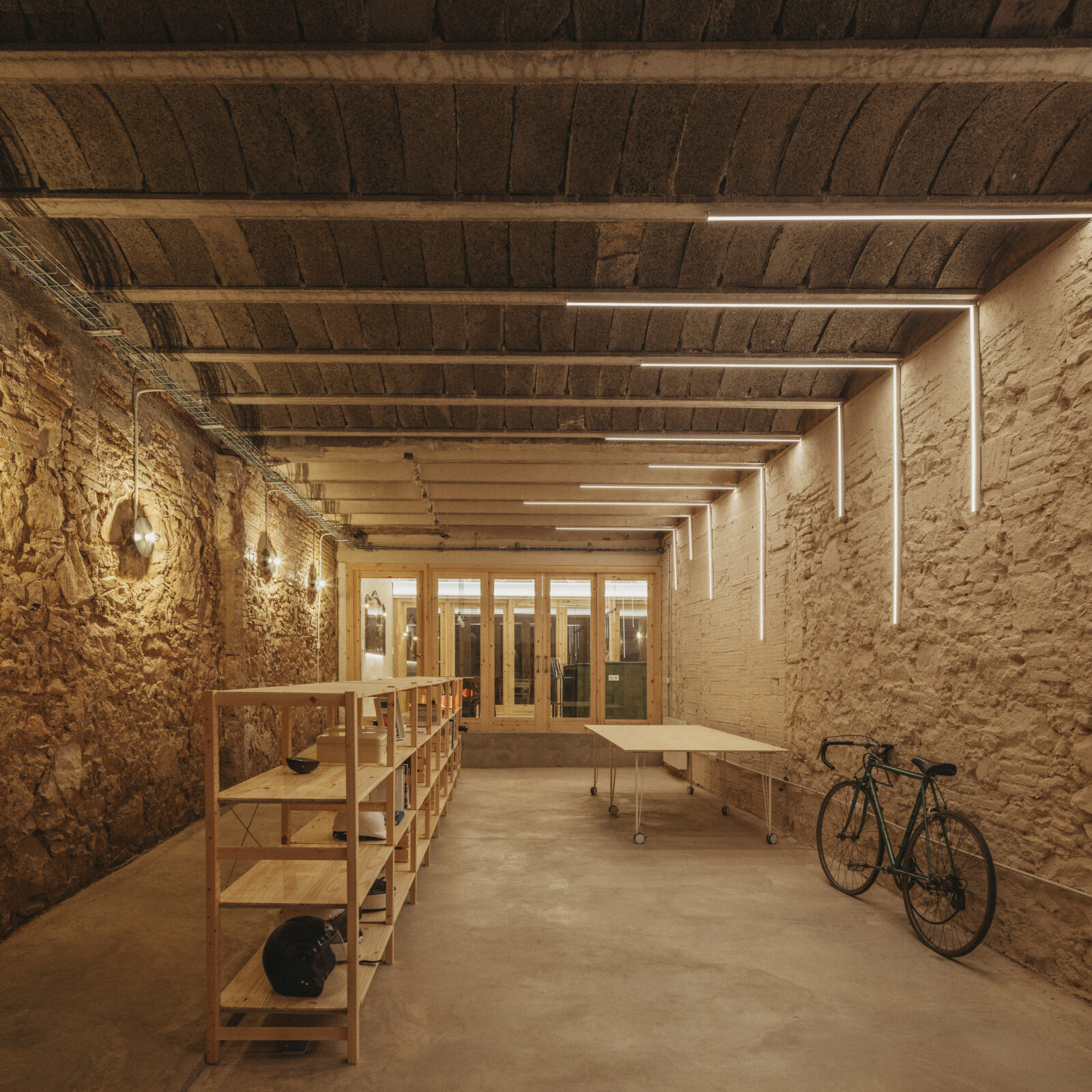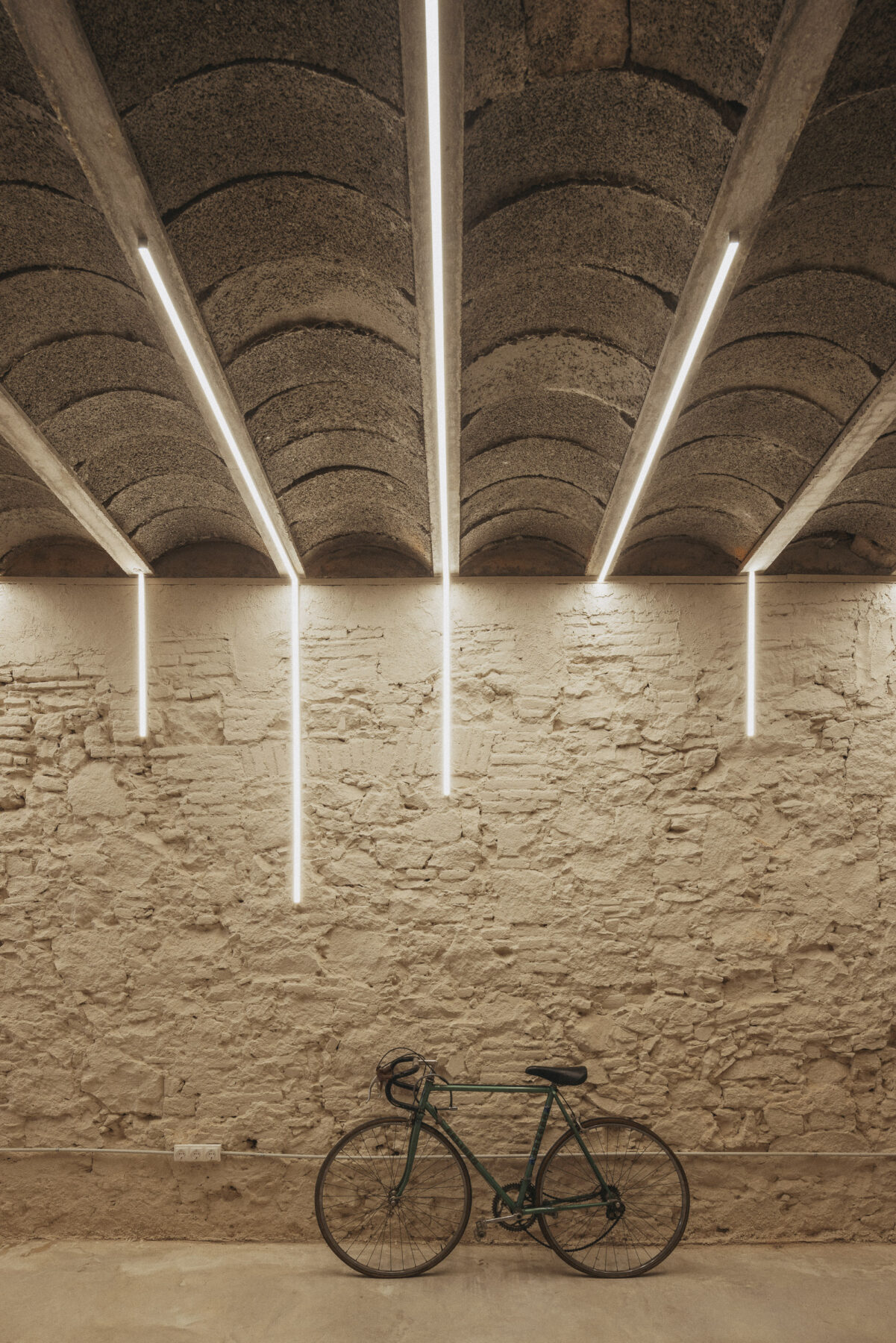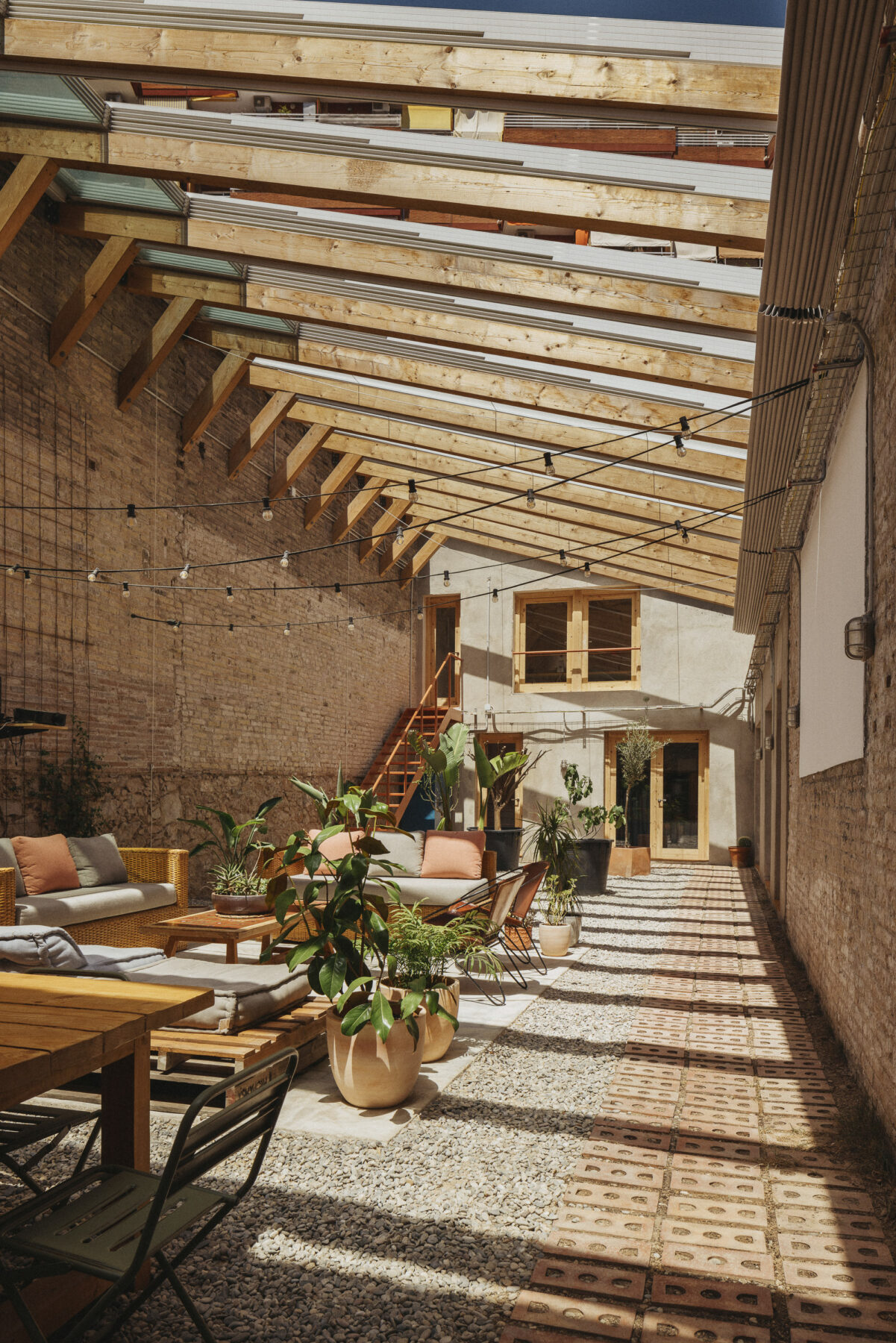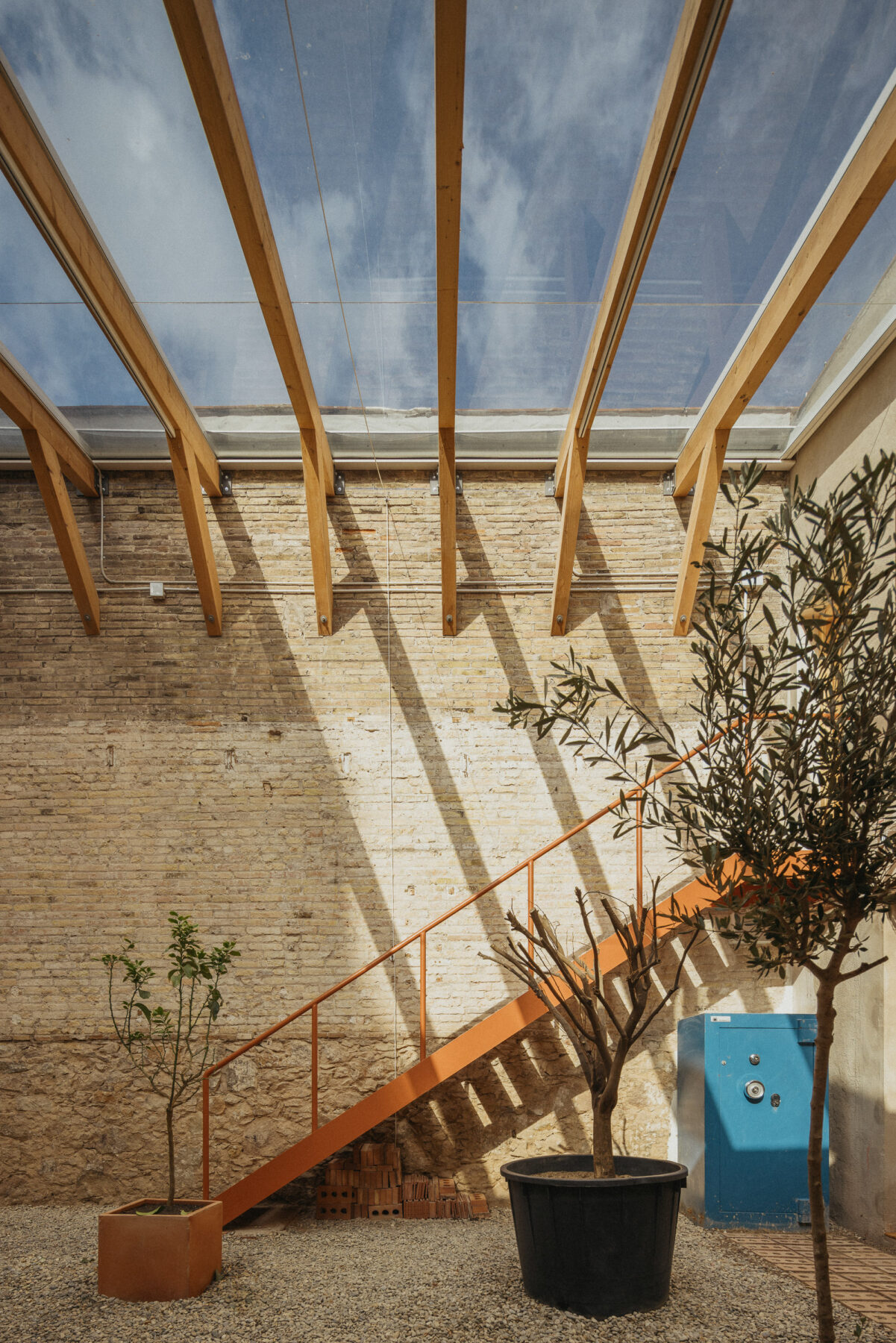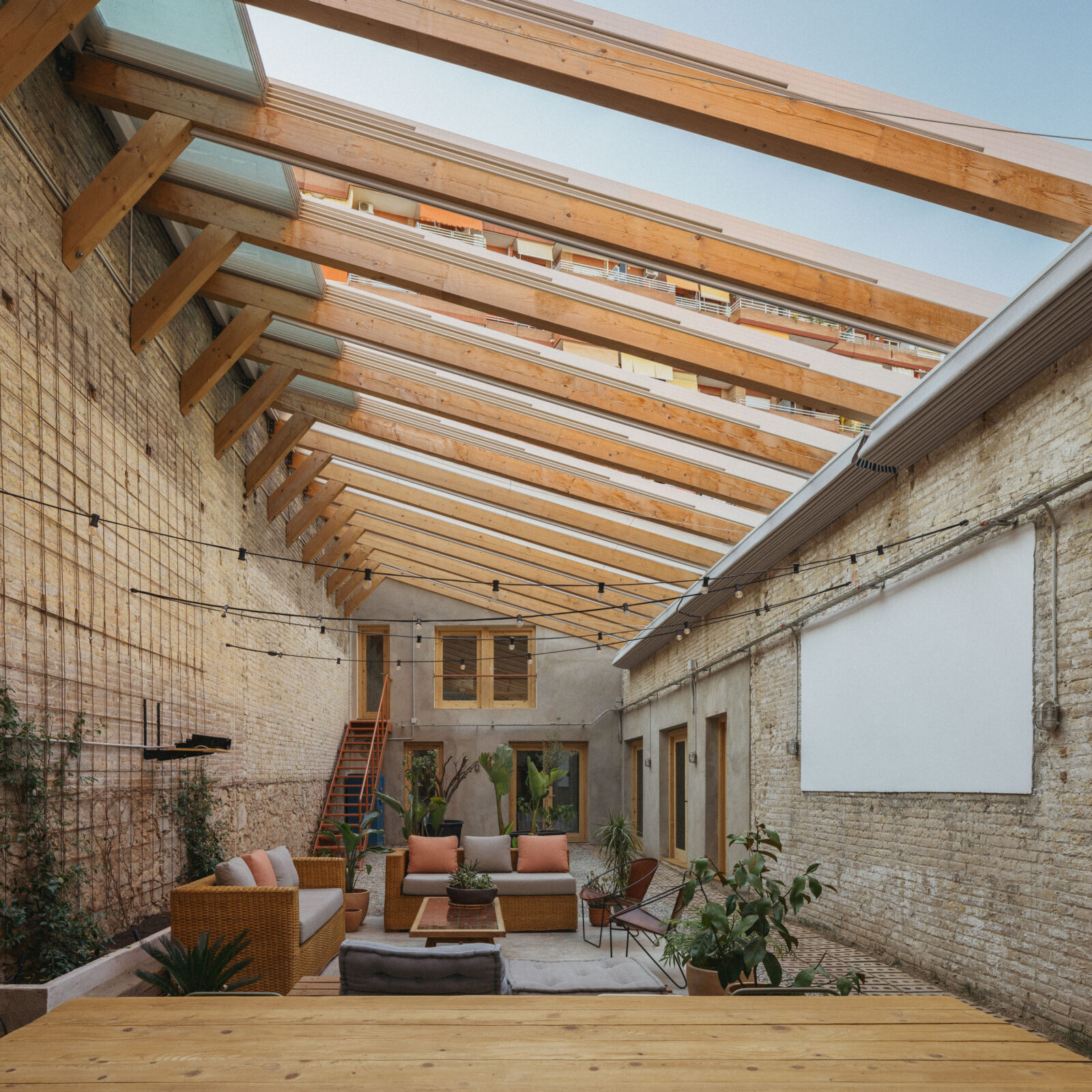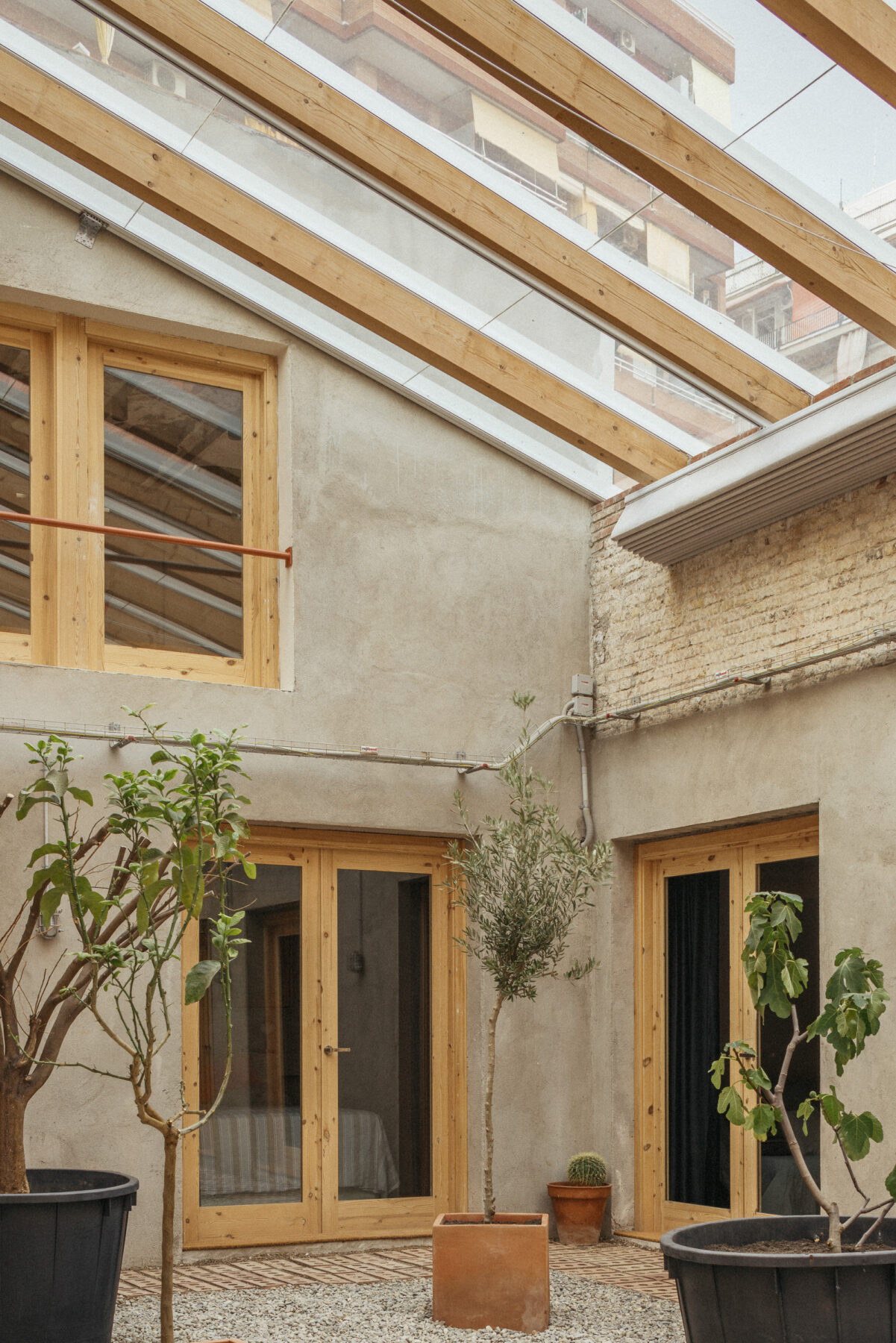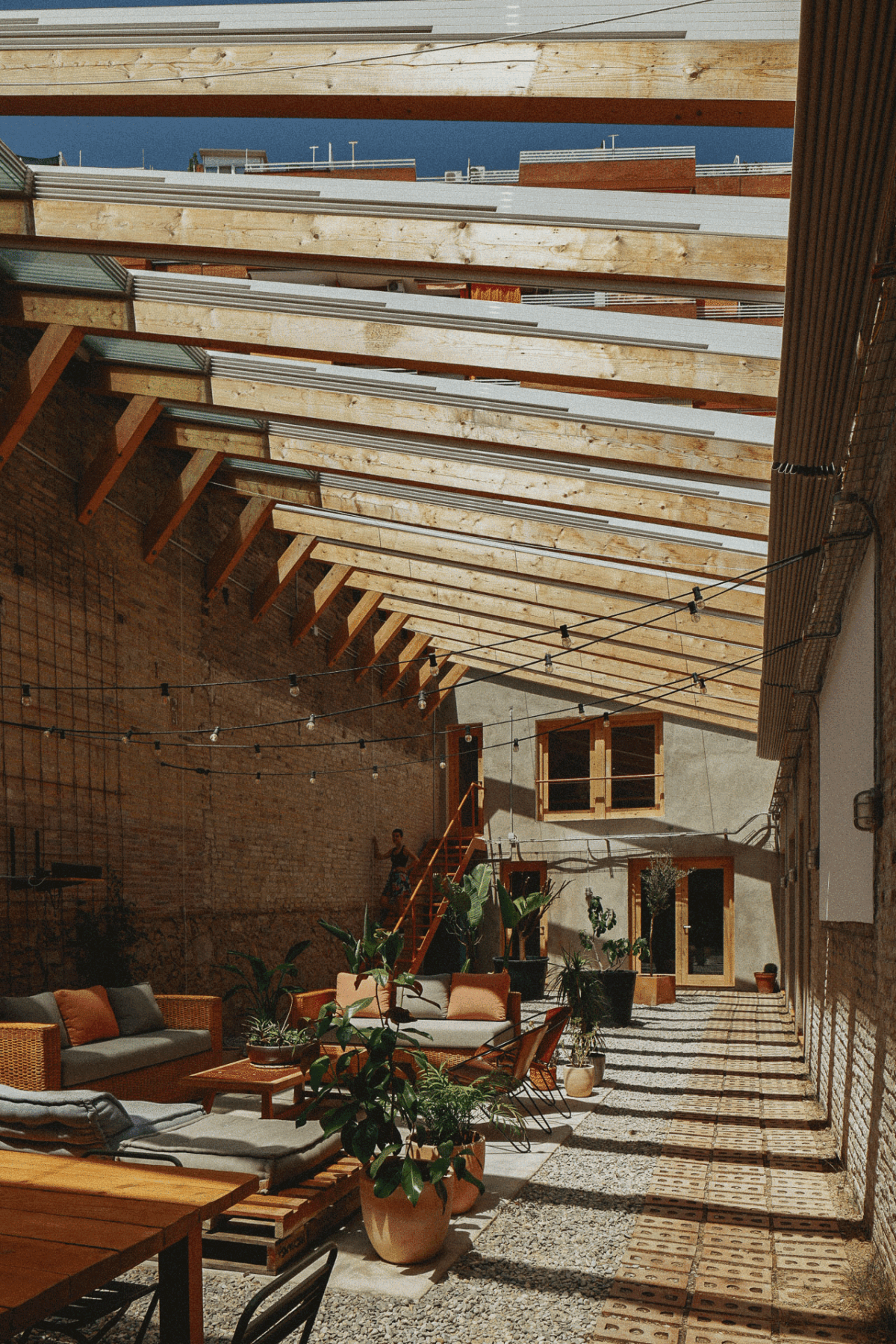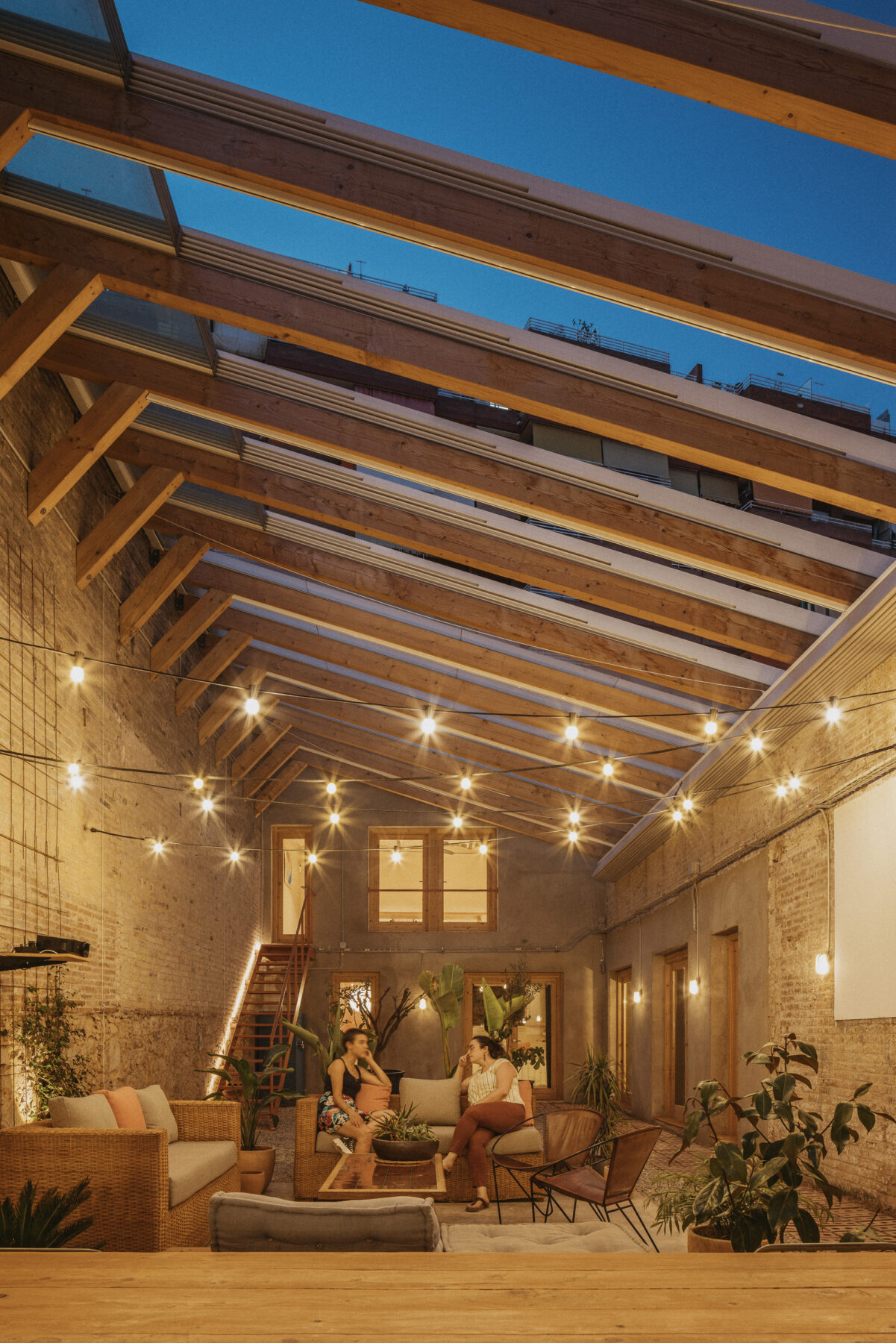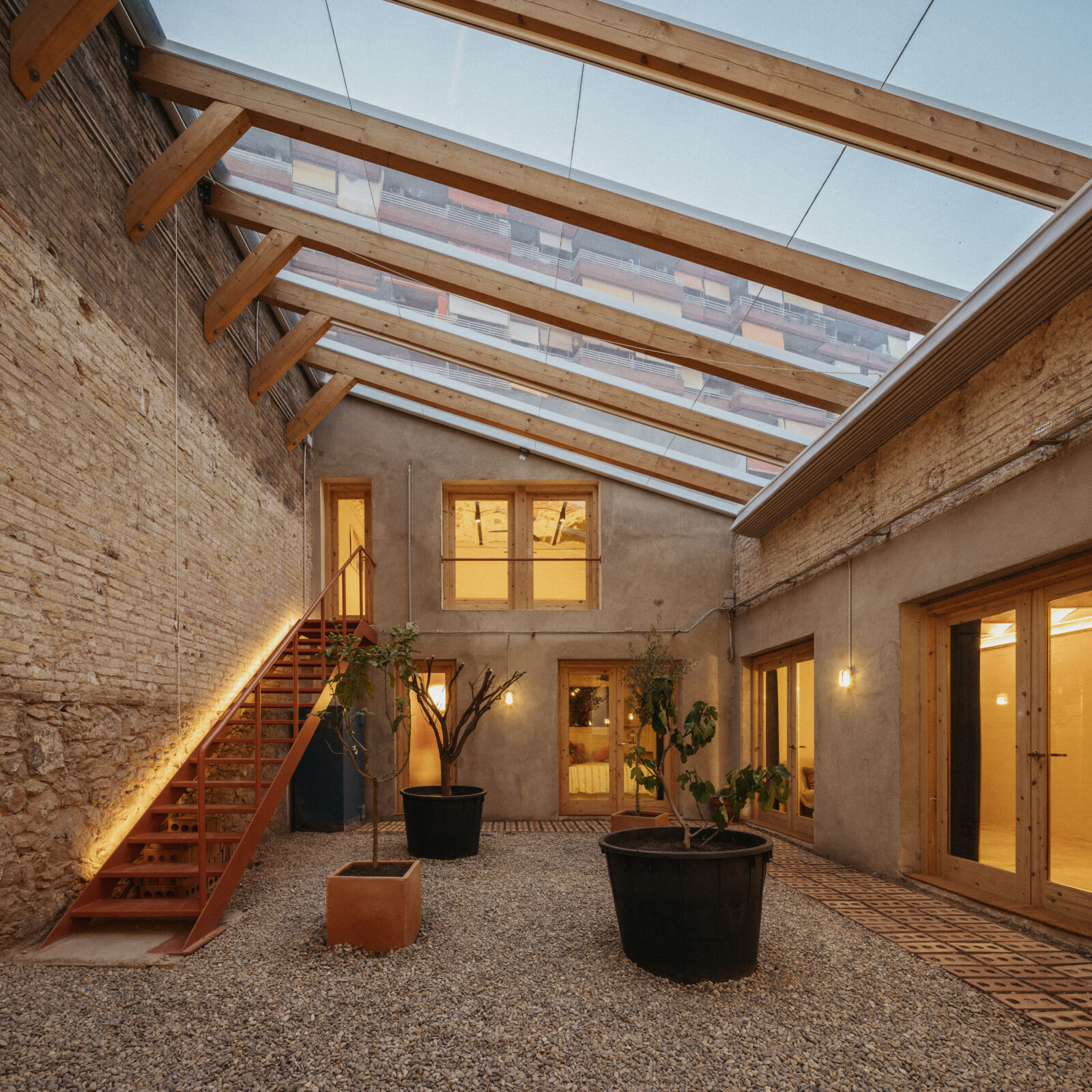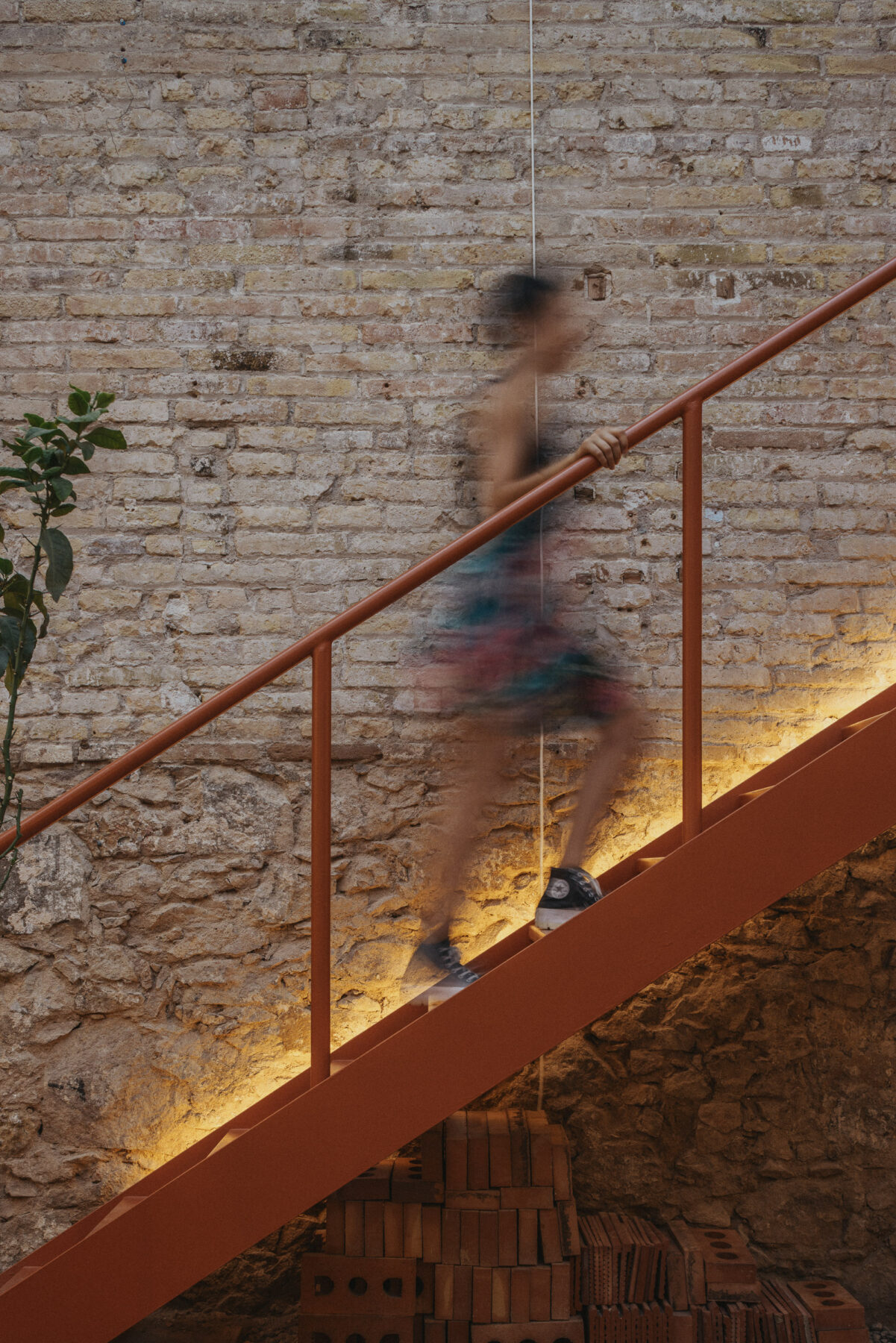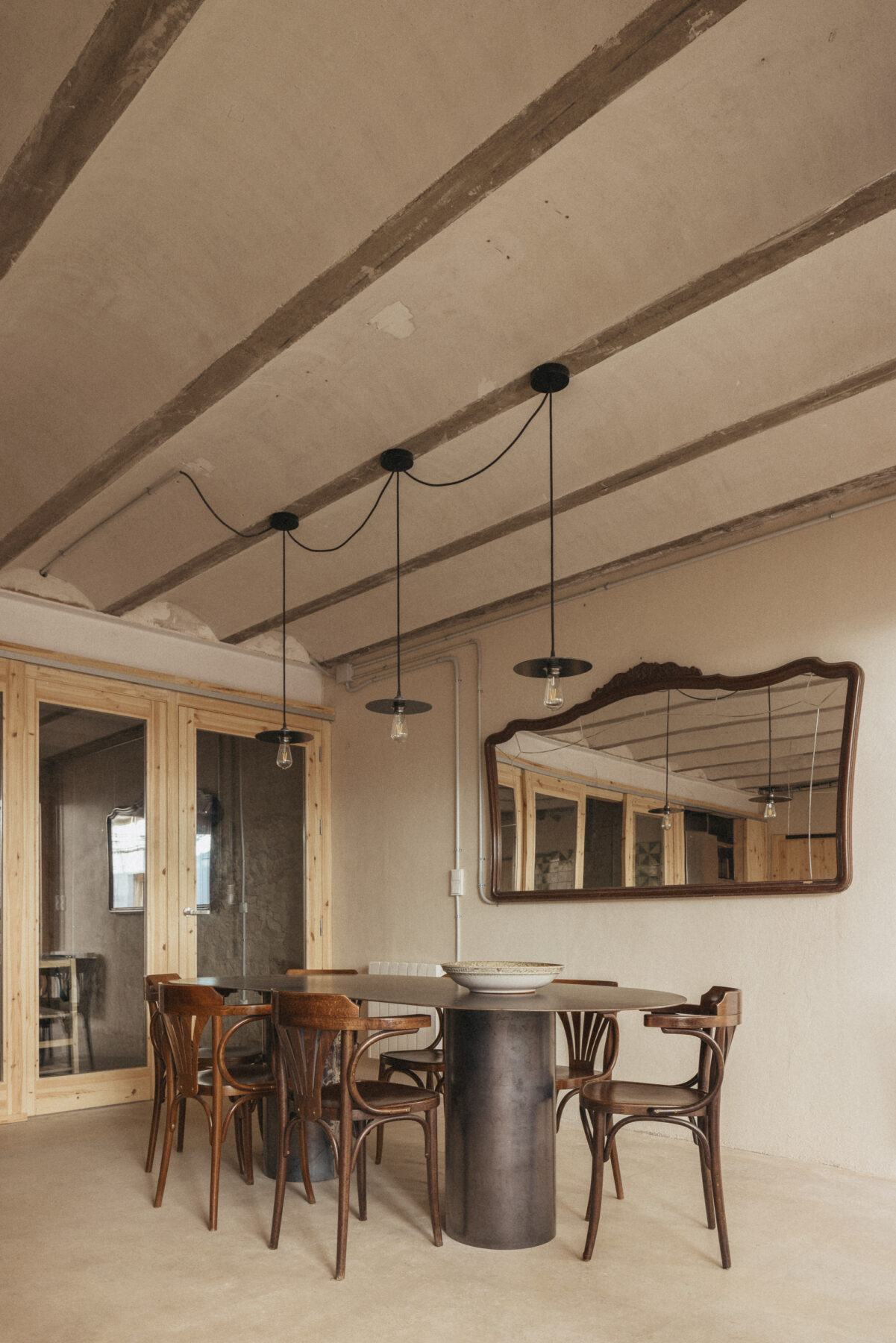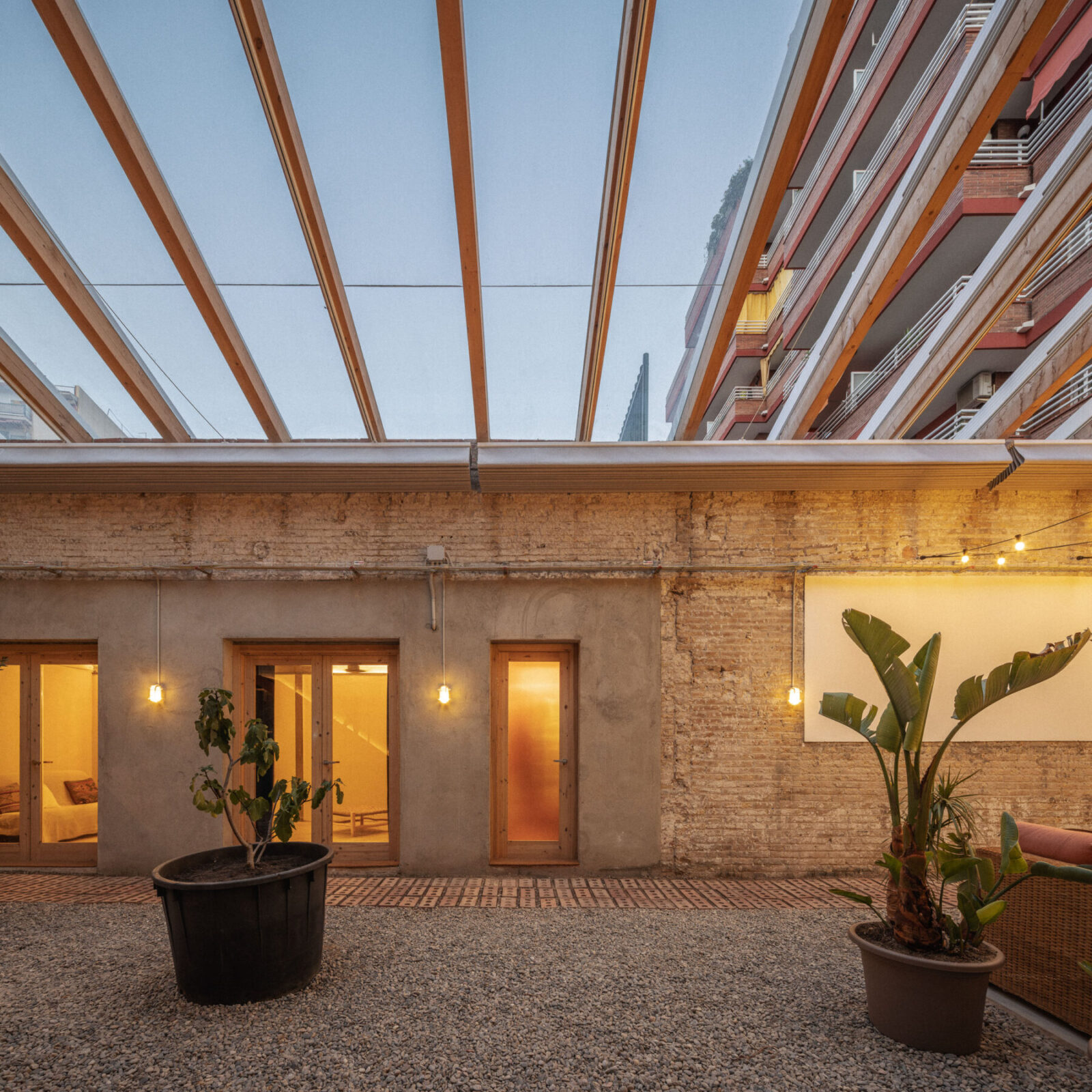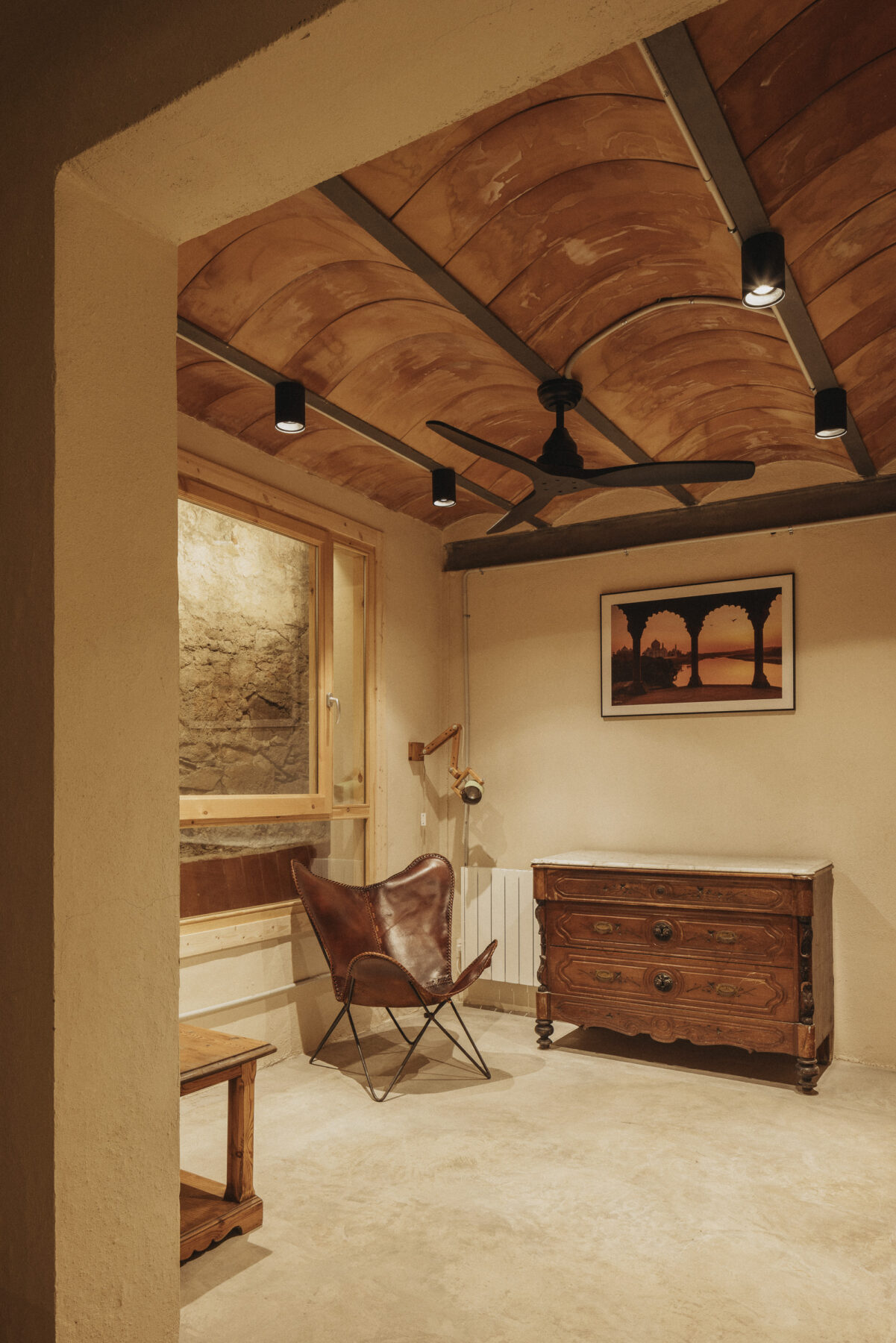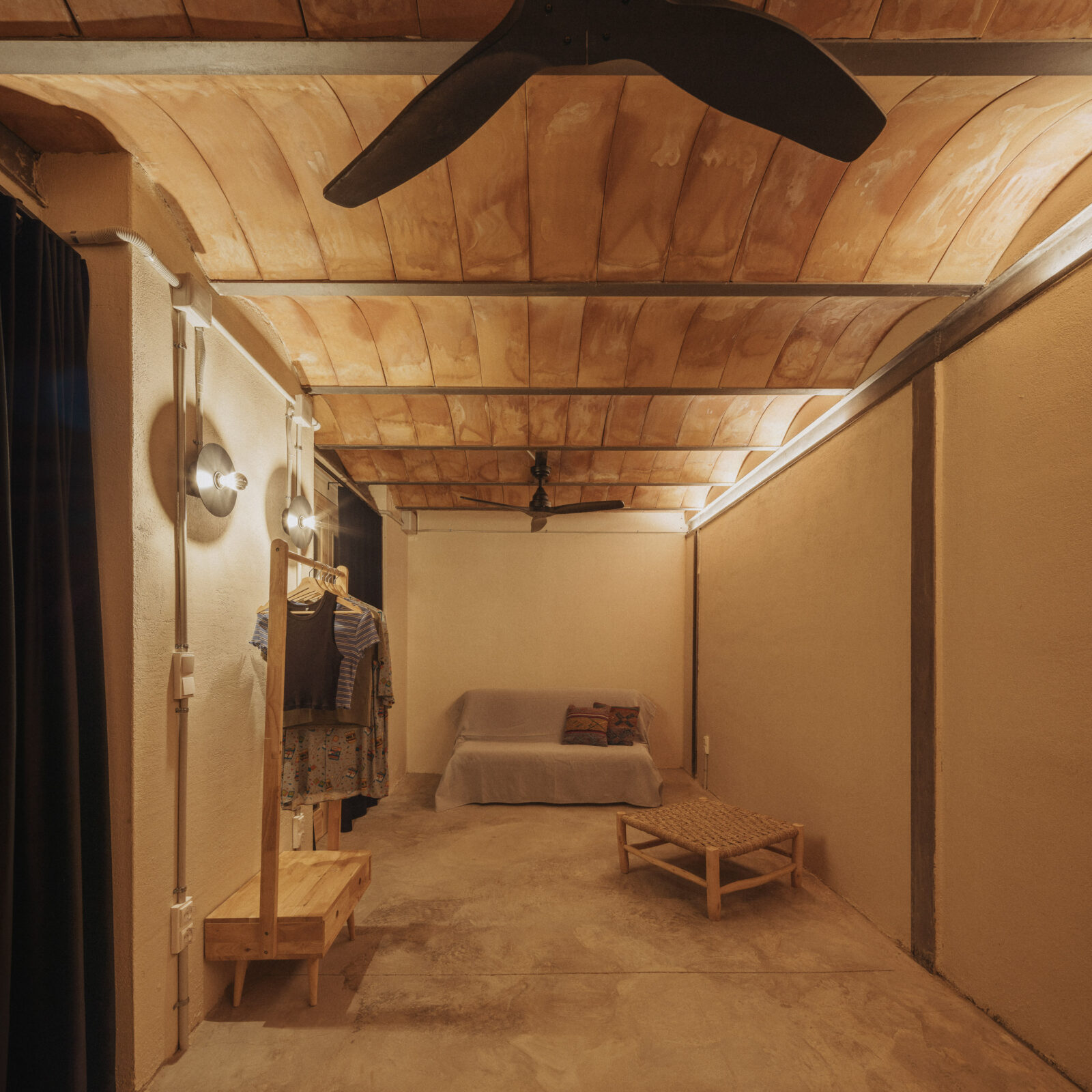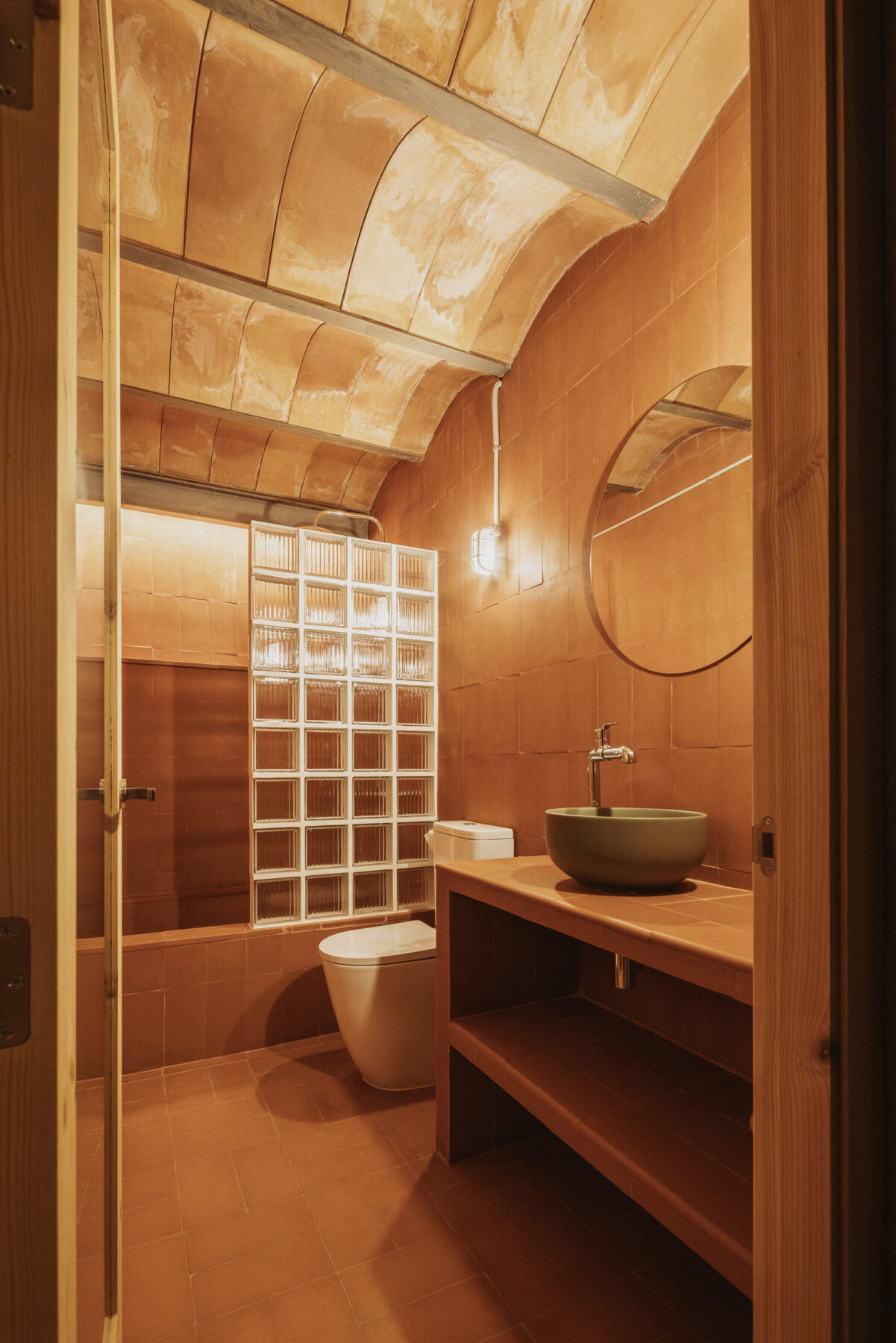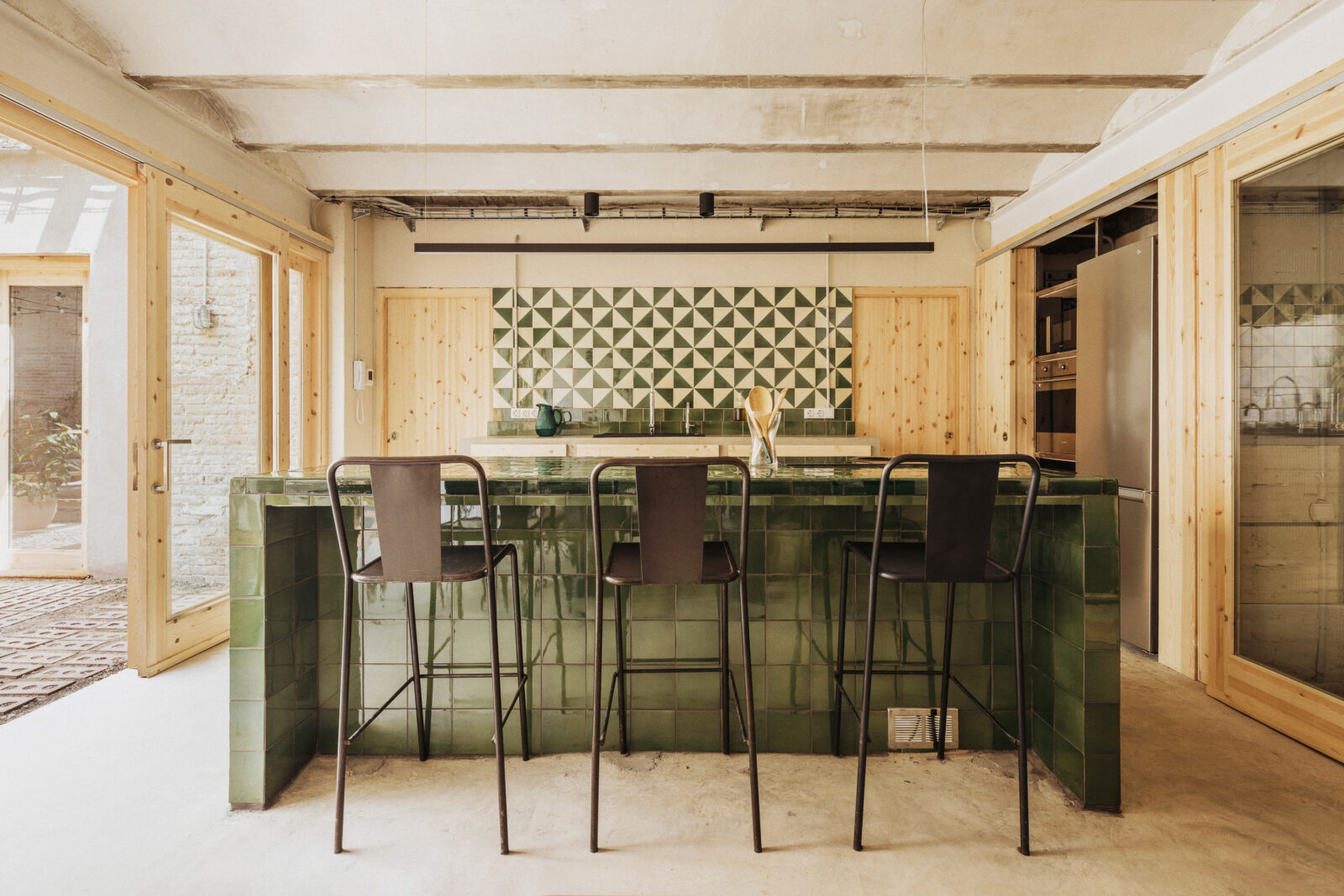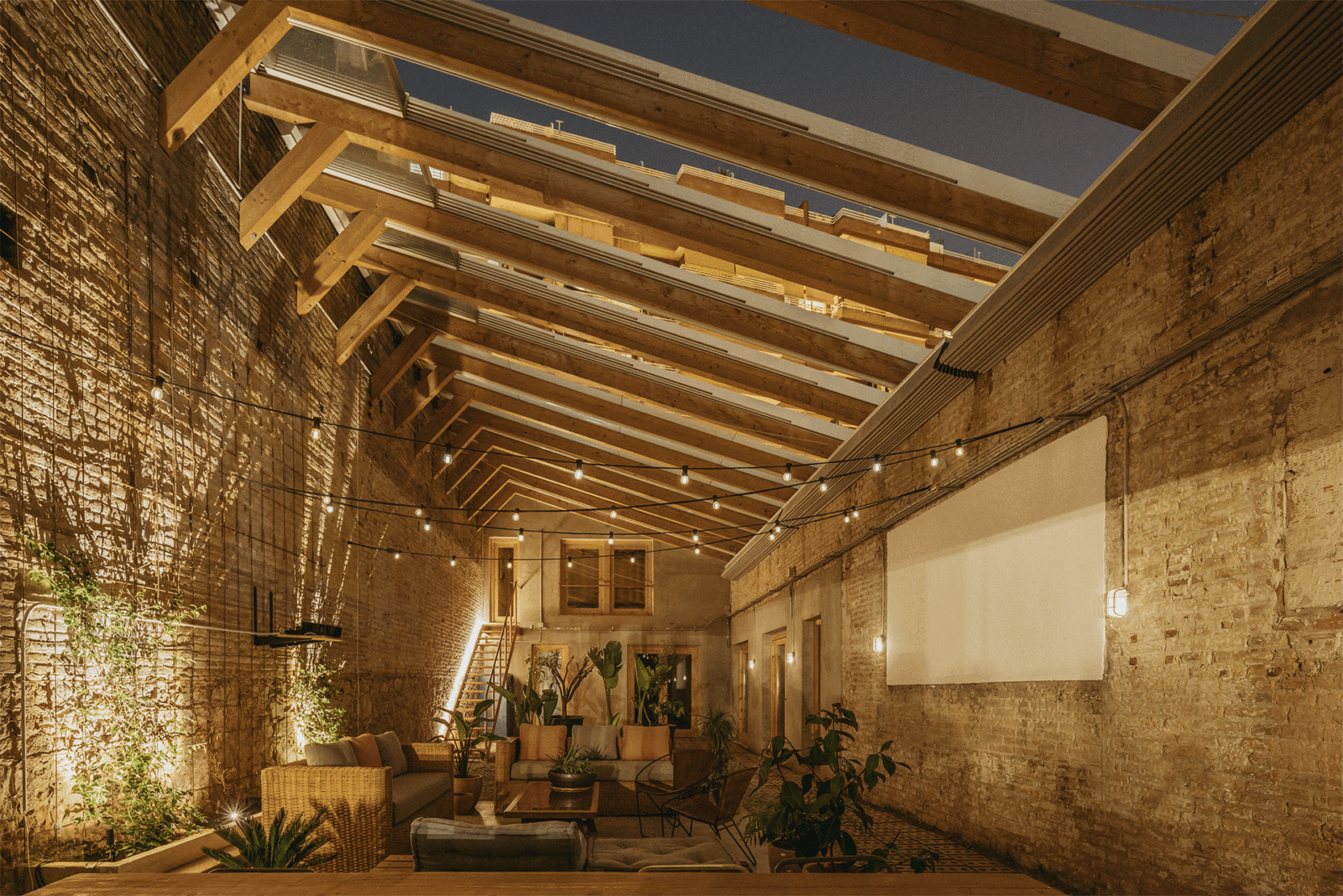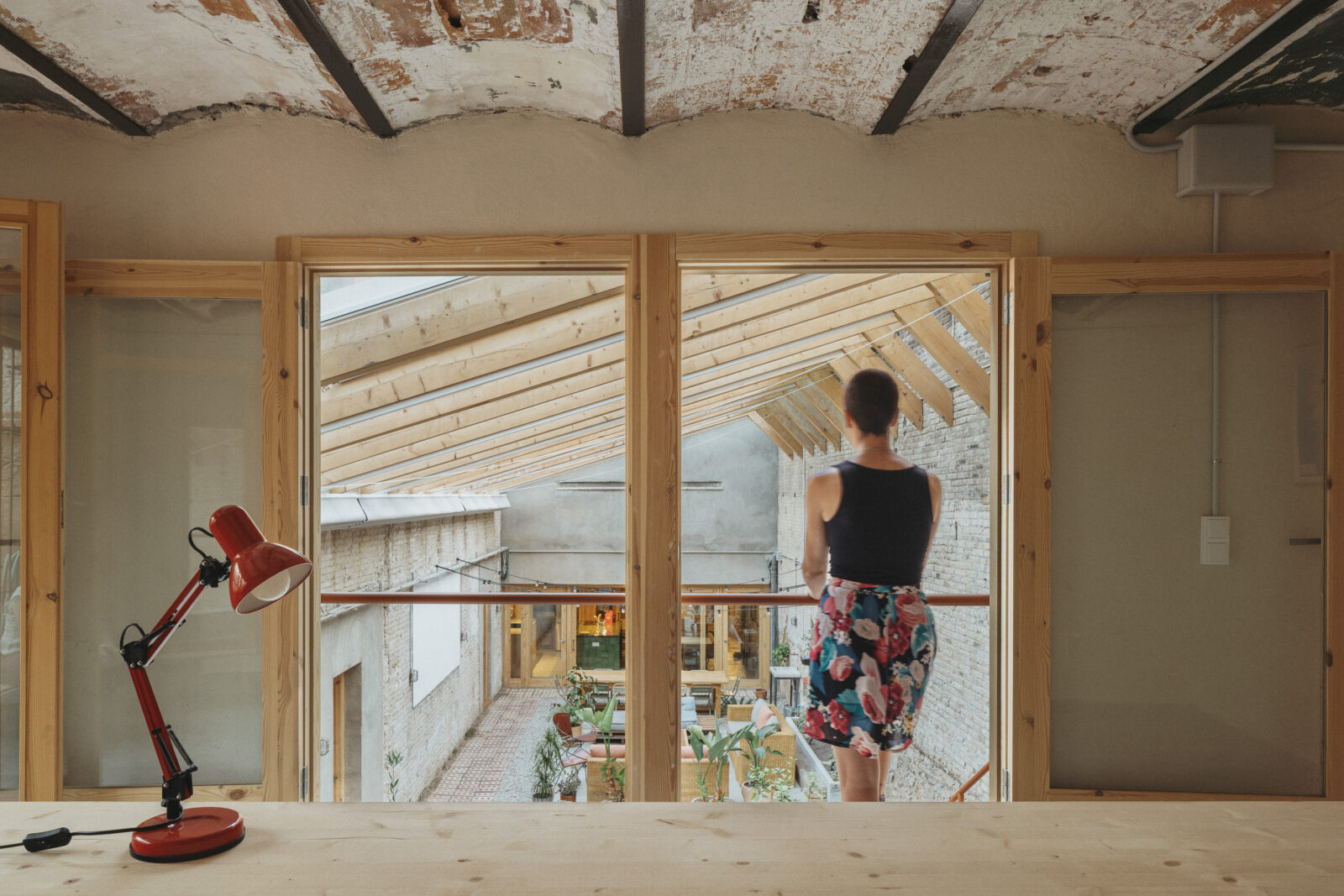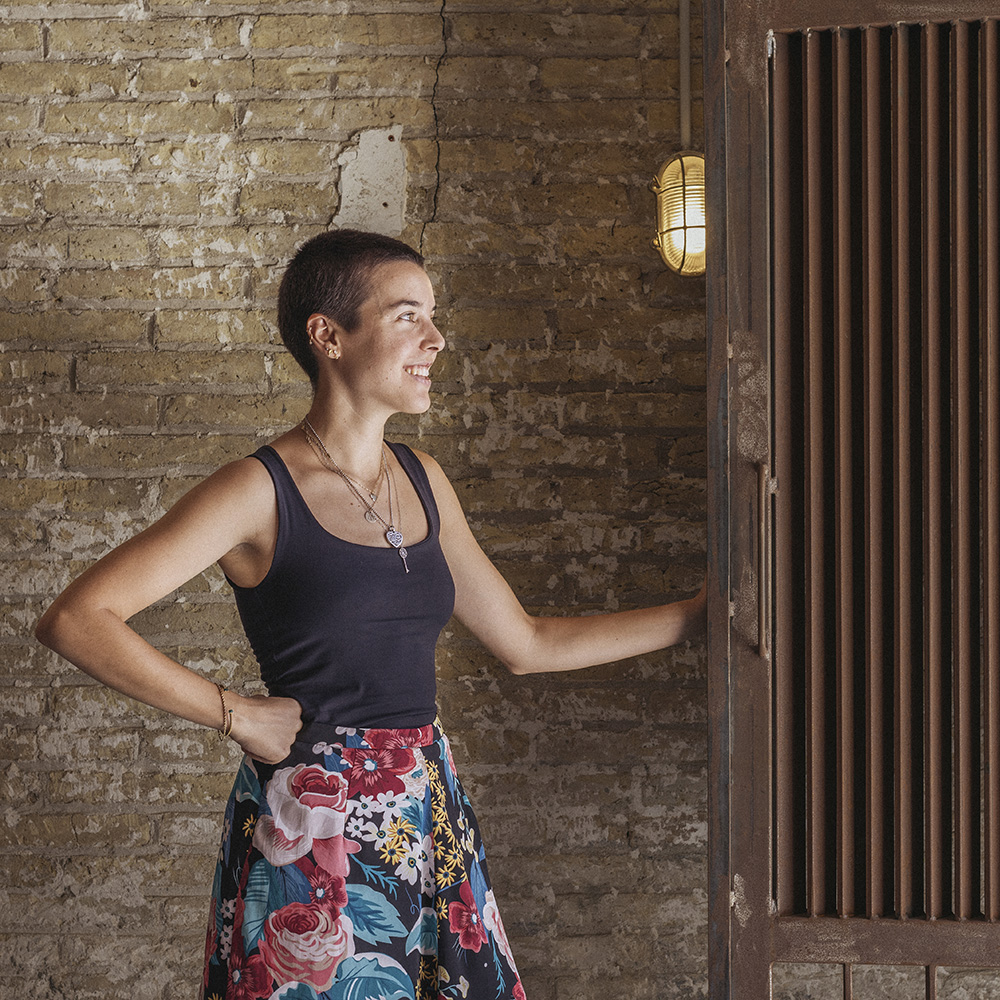Oasis is the name of an architectural project by MARBÄ artquitectura, but it comes from a research process to create a green and sustainable space with the highest quality of life in one of the densest cities in Spain and Europe.
This project is located on the ground floor of a residential block. At the beginning it was a parish, later a printing press and finally a bazaar. The first time I visited it, the distribution and products from the bazaar were still there. The challenge was immense.
The objective of the project was to transform this ground floor into a mixed space where they could live and work in an office.
Another plus was obtaining a high energy efficiency building thinking about passive strategies, local materials and a bioclimatic design (always in accordance with the site and the climate of the place). The main challenge was finding the flexibility to make a house covering the needs of a young couple but considering the possibilities of adaption trough time. The result is a green lung as a central part of the house which works as a thermoregulator.
The idea of a porch, patio, garden and living room merge into a single space covered by aaretractable glass roof to ventilate.
Following the Mediterranean models of the Roman domus or the Arabian patios, the other rooms are articulated around it, nourished by the quality of air, light and temperature provided by this large garden.
The lighting project has been one of the fundamental pilars in this project.
Unlike other works, lighting design was planned while the architectural project was being developed.
The two creative processes merged so hard that we didn’t know if we had first defined the space or the light had defined the use of it. Each corner is treated with a unique affection and this is evident in the atmosphere that the spaces exhales and the calm that produces to who lives here.
The final appearance is a very warm and Mediterranean house, made with glazed ceramics, clay, wood and concrete but with an industrial – or sincere – touch since it reveals all the installations and defects of the original walls and ceilings. Some architectural traces that speak for themselves and allow us to understand the evolution.
Biography: Júlia Marbà Prats
Graduated in Architecture in July 2020 in the La Salle – Ramon Llull University. During her Erasmus in Hamburg she decided that wanted to study Art and she combined the last two years of Architecture with the History of Art degree in the University of Barcelona.
As a recent graduate, she worked in several architecture firms and construction companies focused on sustainability and wooden structures and this is how she learned about bioclimatic architecture and became aware of the environmental importance of the construction sector.
She is currently working on her project “MARBÄ architecture” doing rehabilitation projects focused on energy improvement and with a Mediterranean essence. In fact, she says that one of the greatest influences she had was the architecture of her school, “Garbí”, in Esplugas de Llobregat and built by Oriol Bohigas. In her projects you will find reflected many of the materials that were used at that time, during the 60s-70s in Barcelona.
As an almost-art historian and passionate about theatre she does many ephemeral architecture projects related to scenography and design of temporary spaces. Her goal when she finishes her History of Art degree is to be able to design museum spaces, exhibitions, theatre sets and movie sets
Facts & Credits
Project title: Casa Oasi
Typology: Renovation, Interior
Location: L’Hospitalet de Llobregat (Barcelona), SPAIN
Architecture: MARBÄ artquitectura (Júlia Marbà Prats)
Technical architect: David León Íñigo
Lighting design: Calida Lighting (Maria Alonso Sala)
Area: 350 m²
Completed: February 2023
Photography: Alejandro Gómez Vives
Text: provided by the architects
READ ALSO: BIOFILMS - 5th place on Shortlisted - Top 20 Entries of Yearning to Breath 2023 Competition | by Anthi Kampouri & Marietta Parioti
